The hallmark of October may be the changing of the leaves, but it’s also a milestone month in the weather department! Many areas in Wisconsin will see their last 80-degree temperatures during October, followed by the first frosts and freezes that end the growing season. Some places may even see their first snowflakes of the season by the end of the month.
Not to mention October weather’s impact on the vibrancy of our fall scenery!
Temperatures
The Outlook: Summer Hangs On
NOAA’s Climate Prediction Center is forecasting a high probability of warmer-than-average temperatures in Wisconsin this month. Their forecast shows that nearly the entire U.S. could see above-average warmth, with especially high chances in the Great Lakes region.
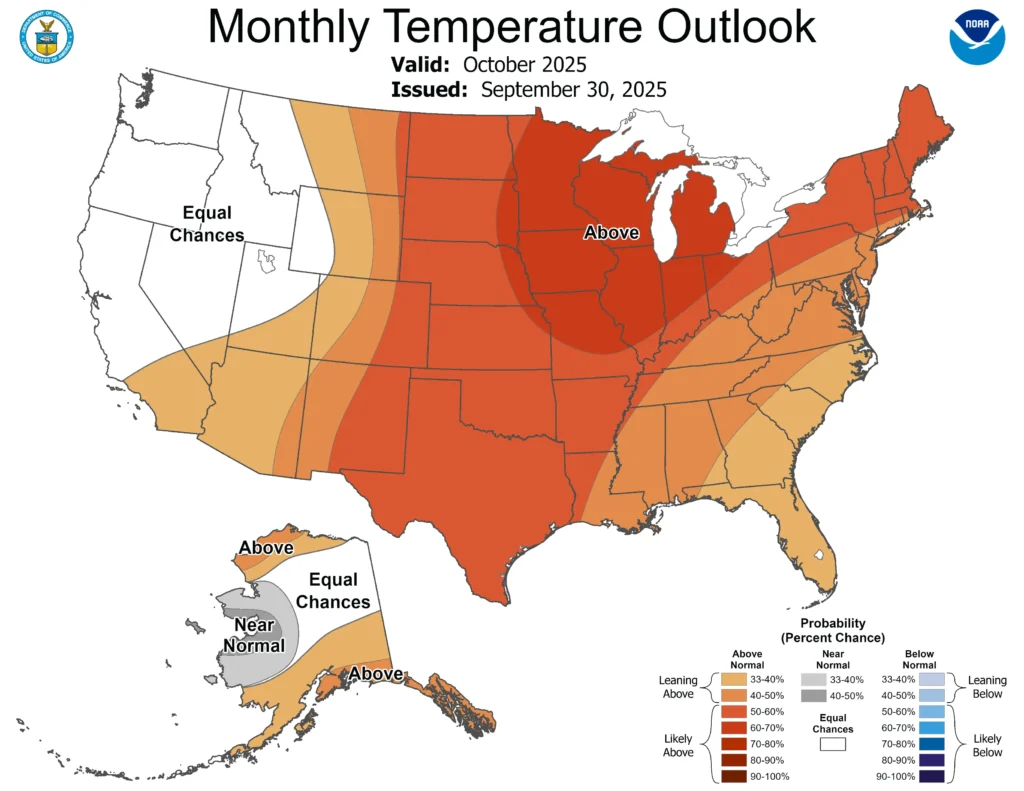
Note that the colors of the above map indicate the probability of above or below average temperatures, not the intensity of the expected warmth or cold. In this case, Wisconsin has a 60 to 70 percent chance of experiencing above-average temperatures. Check out this blog for more information on deciphering climate probabilities.
The Averages:
With fewer bursts of summer heat compared to September, October is typically when some chill begins to settle into the state. Wisconsin’s statewide average temperature during the month is 46.8 degrees. Usually, all of Wisconsin’s first-order stations except La Crosse see their last 80-degree temperatures by the end of September.
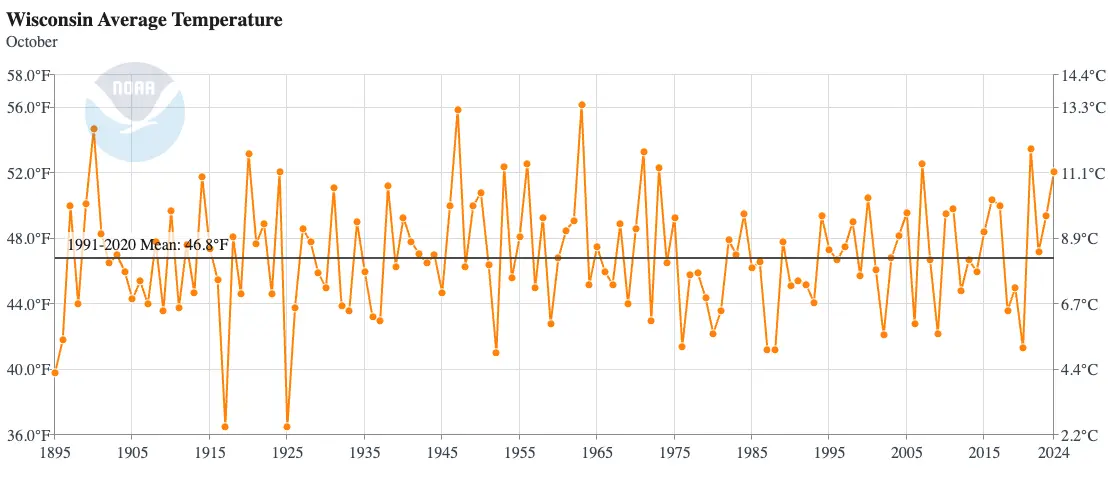
That’s not to say that October can’t pack a punch of heat once in a while!
The hottest October in Wisconsin was in 1963, when the statewide average high temperature for the month was a toasty 68.5 degrees.
October 6 was the hottest day of that month, when many southern cities reached the 90s — including places along the lakeshore like Sheboygan! La Crosse, Madison, Milwaukee, and Green Bay all set or tied records for their warmest October temperature that day.
The coldest Octobers on record were in 1917 and 1925, when the state’s average temperature was 36.5 degrees, with an average high temperature below 45.
During both years, many locations saw the mercury fall to the single digits, but 1925 featured sub-zero temperatures for some. Rest Lake in Vilas County recorded the coldest temperature of 6 degrees below zero.
Precipitation
The Outlook: To Be Determined
The Climate Prediction Center does not see any significant signal in the precipitation outlook for Wisconsin this month, giving the state equal chances of experiencing above, below, or near average precipitation.
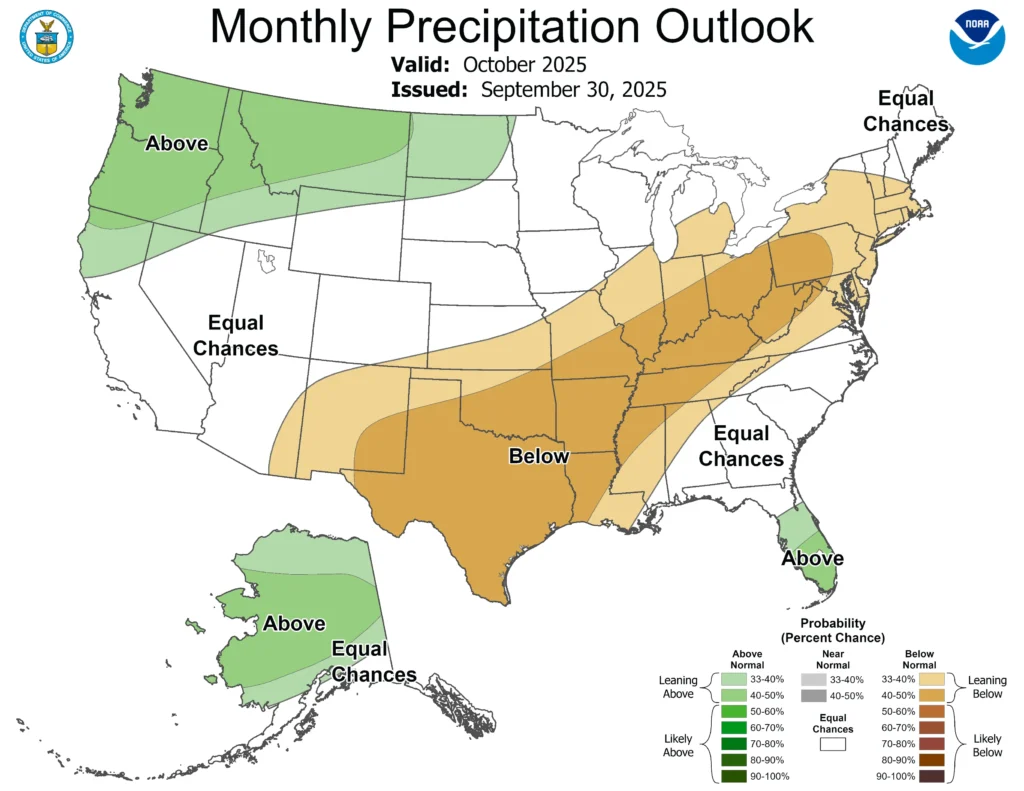
However, areas just to the south of Wisconsin are highlighted as having a chance of drier than average conditions through the month.
The Averages:
Stretches of dry weather are common in Wisconsin through October, as evidenced by the state’s average monthly precipitation of only 3.01 inches. However, with cooler temperatures moving in, that precipitation doesn’t always fall as rain!
The cold October of 1925 doubled as one of the snowiest on record in some parts of the state, including in Eau Claire, La Crosse, and Madison, where over five inches of snow fell.
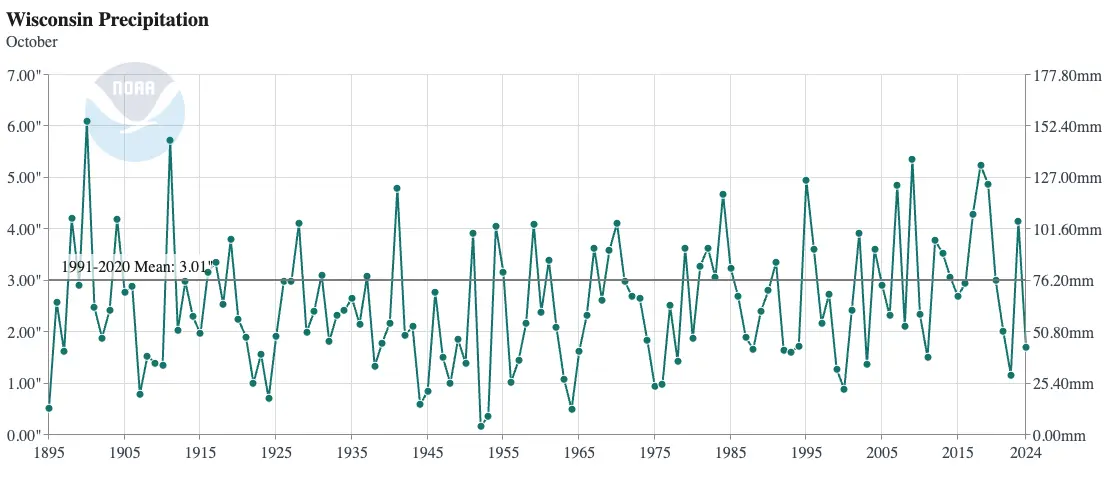
The wettest on record was October 1900, when the statewide average precipitation was just over six inches! Western and central Wisconsin were inundated with rain that month — La Crosse totaled 12.09 inches for the month, while Wausau measured under 11.
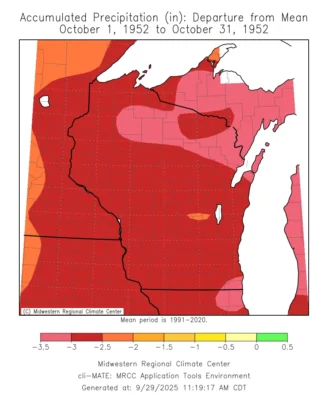
On the other end of the spectrum, October 1952 brought a statewide average of 0.17 inches of precipitation to the state. Wisconsin wasn’t alone in the drought; that month went down as the United States’ driest month on record, with only 0.54 inches as the average precipitation across the country.
After only trace amounts of precipitation were measured, October 1952 remains Green Bay’s driest month on record. Many cities across Wisconsin saw deficits of 2.5 to 3.5 inches, as little as five percent of average monthly precipitation.
This is a product of the Wisconsin State Climatology Office. For questions and comments, please contact us by email (stclim@aos.wisc.edu) or phone (608-263-2374).